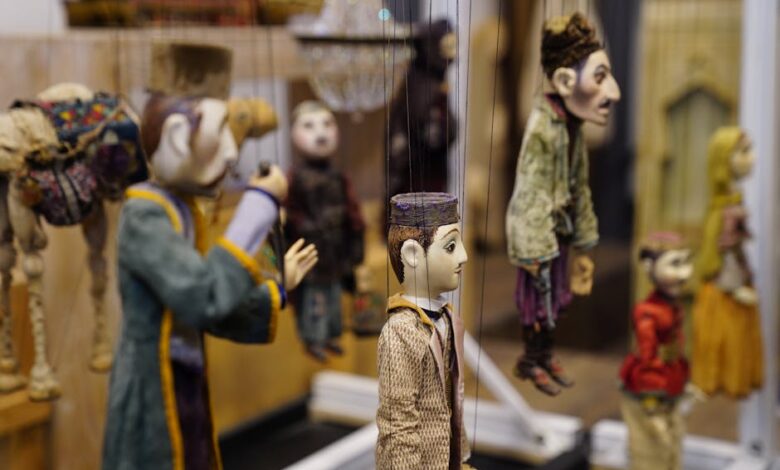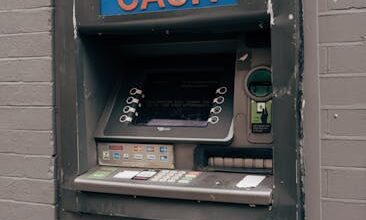CharacterAI Removes Disney Characters After Receiving Cease-and-Desist Letter

CharacterAI Removes Disney Characters After Receiving Cease-and-Desist Letter
Estimated Reading Time: 6 minutes
- Disney’s unwavering commitment to intellectual property protection led to CharacterAI removing its iconic characters from the platform.
- The incident highlights the growing tension and complex legal challenges at the intersection of AI innovation and established copyright law.
- AI platforms face increasing pressure to implement proactive IP safeguards, content moderation, and potentially licensing agreements to avoid legal disputes.
- This legal action serves as a crucial reminder for AI developers, users, and brand owners to understand and respect intellectual property rights in the evolving digital landscape.
- The situation will likely push for new legal frameworks and clearer guidelines specifically tailored for AI-generated content and interactions.
- The Mouse Roars Back: Disney’s Legal Stance
- CharacterAI’s Response and the Broader AI Landscape
- The Future of Fandom and AI Interaction
- Actionable Steps in the AI and IP Landscape
- Real-World Example: Music Industry’s AI Challenge
- Conclusion
- Engage with the Future of AI and IP
- Frequently Asked Questions
In a significant development that underscores the growing tension between artificial intelligence innovation and established intellectual property rights, CharacterAI has begun removing popular Disney characters from its platform. This move comes in the wake of a stern cease-and-desist letter from the Walt Disney Company, signalling a serious legal challenge to the burgeoning AI character creation space.
CharacterAI, a platform renowned for allowing users to create and interact with AI-powered versions of fictional and real-world personalities, had become a hub for digital encounters with beloved Disney figures. From classic princesses to iconic superheroes, users could engage in dynamic conversations, crafting unique narratives with their favourite characters. However, the magic has now been interrupted by the long arm of copyright law.
This incident is more than just a platform update; it’s a critical moment that highlights the complex legal and ethical questions surrounding the use of copyrighted material in AI models. As AI technology becomes increasingly sophisticated, its ability to replicate, mimic, and extend existing creative works pushes the boundaries of traditional intellectual property frameworks, setting the stage for more such conflicts.
The Mouse Roars Back: Disney’s Legal Stance
Disney, a global entertainment behemoth built upon a vast library of iconic characters and stories, has long been a fierce protector of its intellectual property. The company’s legal team has a reputation for vigorously defending its trademarks and copyrights, viewing any unauthorized use as a direct threat to its brand integrity and commercial interests. The CharacterAI situation proved no different.
The cease-and-desist letter sent to CharacterAI made Disney’s position unequivocally clear. It accused the AI platform of leveraging Disney’s widely recognized creations without permission, blurring the lines between fan engagement and commercial exploitation. The core of their argument rested on the unauthorized derivation and display of their copyrighted works.
“Character.ai is freeriding off the goodwill of Disney’s famous marks and brands, and blatantly infringing Disney’s copyrights,” a Disney lawyer wrote.
This statement succinctly articulates the core of Disney’s concern: the unauthorized commercial use of their valuable assets, which they argue constitutes both trademark and copyright infringement.
Disney’s complaint goes beyond mere character likeness. It extends to the “goodwill” associated with their brands – the positive reputation, recognition, and emotional connection built over decades. Allowing an AI platform to host and monetize interactions with these characters without licensing agreements could dilute their brand, confuse consumers, and undermine Disney’s carefully controlled narrative and merchandising efforts.
This legal action serves as a potent reminder that while AI technology offers incredible creative possibilities, it does not operate in a legal vacuum. Existing laws, particularly those governing intellectual property, are being tested and applied to new digital frontiers, forcing AI developers and users alike to re-evaluate their approaches to content creation and distribution.
CharacterAI’s Response and the Broader AI Landscape
Faced with the legal might of Disney, CharacterAI swiftly moved to comply with the cease-and-desist order. Reports from users quickly confirmed the disappearance of various Disney-related characters from the platform, marking a significant shift in the content available for interaction. This prompt action highlights the potential legal vulnerabilities of AI platforms that rely heavily on user-generated content or allow the creation of characters based on existing IP.
The incident brings to light a critical challenge for the rapidly evolving AI industry: how to foster innovation and creative expression while respecting established intellectual property rights. AI models are often trained on vast datasets that can include copyrighted works, making it difficult to precisely delineate where inspiration ends and infringement begins. Furthermore, user-generated AI content, much like traditional fan fiction or fan art, often operates in a grey area, but when platforms host and potentially monetize such content, the legal stakes rise considerably.
CharacterAI’s situation is not isolated. Many AI art generators, text-to-image models, and character-building platforms regularly grapple with similar issues. The “wild west” phase of AI development, characterized by rapid experimentation and minimal regulation, is gradually giving way to a more structured environment where legal compliance becomes paramount. Developers are now under increasing pressure to implement more robust filtering systems, content moderation policies, and IP-aware design principles to avoid costly legal battles.
This evolving landscape necessitates a proactive approach from AI companies. It involves not only reacting to cease-and-desist letters but also pre-emptively designing systems that can identify and prevent the creation or distribution of infringing content. The balance lies in building powerful, expressive AI tools without inadvertently becoming a conduit for copyright violations, a task that presents significant technical and ethical hurdles.
The Future of Fandom and AI Interaction
The removal of Disney characters from CharacterAI inevitably impacts the user community that enjoyed interacting with these digital personas. For many, these AI interactions offered a unique form of engagement with their beloved characters, extending stories and exploring new possibilities. This incident raises questions about the future of fan-driven content in the age of AI and the boundaries between personal enjoyment and public distribution.
For creators and enthusiasts looking to build AI personas, this event serves as a stark reminder of the importance of intellectual property. While personal use or highly transformative fan works might exist in a more lenient zone, platforms that host and make these characters accessible to a wide audience enter a commercial domain where copyright holders have a stronger claim. The line between homage and infringement is often dictated by the intent of use and the potential for commercial gain.
Looking ahead, AI platforms will likely need to develop more sophisticated mechanisms for handling IP. This could include partnerships with major IP holders to license characters for official AI interactions, creating distinct “fan-friendly” zones with clear guidelines, or investing in AI models that are specifically designed to generate entirely original characters and narratives. The goal would be to foster creativity without treading on established legal rights.
This event could also push the conversation towards the development of new legal frameworks specifically tailored for AI-generated content. As AI becomes more integrated into creative industries, a clearer understanding of ownership, originality, and fair use in the context of machine learning algorithms will become indispensable. The interaction between AI and intellectual property is an ongoing dialogue, with Disney’s action against CharacterAI being a loud and clear voice in that conversation.
Actionable Steps in the AI and IP Landscape:
- For AI Developers and Platform Owners: Implement Proactive IP Safeguards. Integrate robust content moderation and filtering systems that can detect and prevent the creation or sharing of copyrighted material. This involves not only reactive measures but also pre-emptive design choices in AI model training and user interface. Consider licensing agreements with major IP holders to offer authorized content, opening new revenue streams while ensuring compliance.
- For Content Creators and AI Users: Understand and Respect Intellectual Property. Before creating or interacting with AI characters based on existing media, familiarise yourself with copyright and trademark laws. Avoid direct replication of famous characters for public or commercial use without explicit permission. Focus on generating original characters or engaging with content explicitly designed for AI interaction, ensuring your creations are ethically and legally sound.
- For Brand Owners and IP Holders: Monitor and Protect Your Assets Proactively. Regularly monitor AI platforms and emerging technologies for unauthorized use of your brands, characters, and trademarks. Establish clear policies and communicate them to AI developers. Be prepared to issue cease-and-desist letters or pursue legal action swiftly to safeguard your intellectual property and maintain brand integrity in the evolving digital landscape.
Real-World Example: Music Industry’s AI Challenge
The challenges faced by CharacterAI are echoed across various creative industries. For instance, the music industry has seen instances where AI-generated songs mimicking the voice or style of famous artists have quickly gone viral. One notable case involved an AI-generated track attempting to replicate Drake’s voice, which was rapidly removed from streaming platforms like Spotify and Apple Music following complaints from Universal Music Group. This demonstrates that intellectual property protection extends beyond visual characters to vocal likeness and unique artistic styles when exploited by AI.
Conclusion
The removal of Disney characters from CharacterAI following a cease-and-desist letter marks a pivotal moment in the ongoing dialogue between artificial intelligence innovation and intellectual property law. It underscores Disney’s unwavering commitment to protecting its vast array of iconic characters and brands, sending a clear message to AI platforms that unauthorized use of copyrighted material will not be tolerated.
This incident is a powerful catalyst for the AI industry to mature, prompting developers and users alike to critically examine their approaches to content creation and distribution. It highlights the urgent need for clearer guidelines, more robust legal frameworks, and a heightened sense of ethical responsibility to navigate the complex intersection of technology and creativity. As AI continues to evolve, the balance between innovation and protection will remain a central, defining challenge.
Engage with the Future of AI and IP
What are your thoughts on this evolving legal landscape? Do you believe AI platforms should have more freedom with copyrighted characters, or are current protections essential? Share your insights and join the conversation in the comments below. Stay informed about the latest developments in AI and intellectual property by subscribing to our updates!
Frequently Asked Questions
- Q: Why did CharacterAI remove Disney characters from its platform?
- Q: What legal issues are at play in the CharacterAI and Disney situation?
- Q: How does this incident impact AI developers and users?
- Q: What are some actionable steps for brand owners regarding AI and IP?
- Q: Is this an isolated incident, or a broader trend in the AI industry?
A: CharacterAI removed Disney characters after receiving a stern cease-and-desist letter from the Walt Disney Company. Disney accused the platform of unauthorized use and infringement of its copyrighted characters and trademarks, threatening legal action.
A: The primary legal issues involve copyright infringement and trademark infringement. Disney argues that CharacterAI was leveraging its creations and associated “goodwill” without permission, blurring the lines between fan engagement and commercial exploitation.
A: For developers, it highlights the need for robust IP safeguards, content moderation, and potentially licensing agreements. For users, it underscores the importance of understanding copyright laws and focusing on original content or officially licensed AI interactions.
A: Brand owners should proactively monitor AI platforms for unauthorized use of their assets, establish clear policies, communicate with AI developers, and be prepared to issue cease-and-desist letters or pursue legal action swiftly to protect their intellectual property.
A: This is part of a broader trend. Many AI platforms, including art generators and music AI, are grappling with similar challenges related to copyrighted material. The “wild west” phase of AI is evolving into a more regulated environment, with increased pressure for legal compliance.





